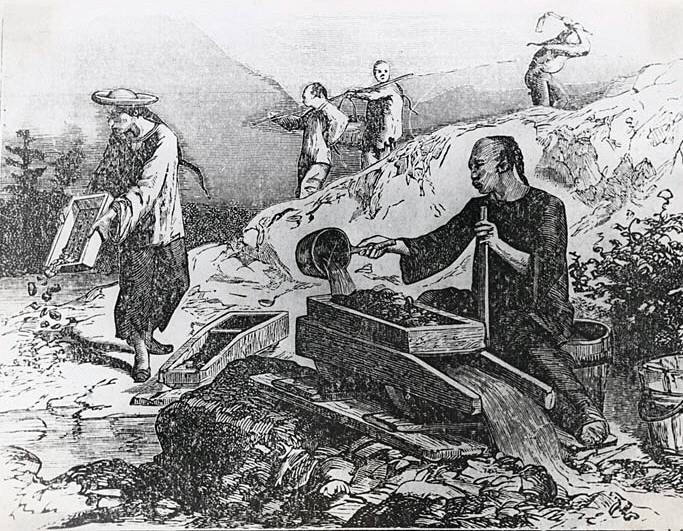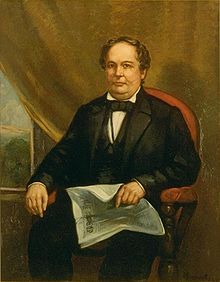Travel Bans: Trump is Not an Original
When President Donald Trump signed Executive Order 13769 on January 21, 2017, suspending the U.S. Refugee Admissions Program for 120 days, decreasing the number of refugees to be admitted to 50,000 in 2017, and suspending immigration from seven predominantly Muslim countries, among other provisions, he was standing on the shoulders of other state and national leaders throughout history who also exercised their powers to exclude groups of people from entering the country.
| President Donald Trump signs Executive Order 13769. Courtesy Radio Free Europe. |
Using the government to refuse entry or to expel a group of people is not new. Famous examples include President Franklin Roosevelt and the SS St. Louis in 1939, the Chinese Exclusion Act in 1882 and the Alien and Sedition Acts in 1798. The fears that led to those actions are the same we hear now, that we're either 1) afraid that foreigners will compromise the security of our country, or 2) that they will leech the country of its resources, including jobs. Or 3) all of the above.
These fears pervade society in all corners of the nation and in all periods in history. Even liberal California has a history of distrust and fear of foreigners that has often demanded that government step in to rid the country of the problem.
Beginning in late 1848, the state experienced a migration to exploit its resources like the world had never seen. Gold was discovered that year, and when word got out, adventurers and fortune-seekers around the world dropped what they were doing and rushed into the Mexican territory from all directions, colliding with each other and all the disparate cultures they brought with them. Most arrived wide-eyed, encountering races of people they'd only imagined. Bayard Taylor, a reporter on assignment for the New York Tribune, marveled:
"The streets were full of people, hurrying to and fro, and of as diverse and bizarre a character as the houses: Yankees of every possible variety, native Californians in sarapes and sombreros, Chilians, Sonorians, Kanakas from Hawaii, Chinese with long tails, Malays armed with their everlasting creeses, and others in those embrowned and bearded visages it was impossible to recognize any especial nationality."
Louis Simonin, a French traveler, was also amazed:
"First come the Americans in hurried rows, just as it suits a people who are at home. The French, English, Irish, Germans and Italians are mixed with the Americans and are distinguished from the latter by type or by language. Then comes a strange mixture of Mexicans, the dispossessed masters of California, proudly draped in their serapes; Chileans covered by their brightly colored ponchos; Chinese men in round bonnets and silk pants and Chinese women strangely dressed; finally Negroes, for the most part dressed in tatters picked up here and there, and who stroll by while singing and dawdling in the streets. Occasionally appears the strange figure of an Indian, newly arrived from the interior only to be swallowed up in the big city."
| The diversity of San Francisco is depicted in this painting of a bar scene. |
But when all these races headed to the hills to stake their gold claims, it was inevitable that the competition would bring the old fears to the surface. This happened to all non-American races in the gold rush, but especially with the Chinese. The Chinese were careful, meticulous miners who often moved into a claim after other races, usually Americans or Europeans, had gathered all the prize nuggets of gold and moved on. The Chinese were satisfied to pan for the dregs, the leftover gold dust that whites couldn't bother themselves with.
 |
| A depiction of Chinese miners in the gold rush. |
Some Chinese became moderately rich this way, which angered the whites who had abandoned the claims in the first place. It chapped them so much that they appealed to the state to do something about these upstart immigrants. John Bigler, the newly elected governor, wanted to score a quick victory (sound familiar?) and tried to hit a nerve. He addressed the legislature on April 23, 1852:
"I am deeply impressed with the conviction that, in order to enhance the prosperity and to preserve the tranquility of the State, measures must be adopted to check this tide of Asiatic immigration, and prevent the exportation by them of the precious metals which they dig up from our soil without charge, and without assuming any of the obligations imposed upon citizens."
And if the government didn't act quickly,
". . . vast numbers [of Chinese] may be induced, under contracts, to emigrate to a country which they are told contains inexhaustible mines of gold and silver."
 |
| Governor John Bigler |
Fast forward to today, the same themes arise when we look at then-candidate Trump's concerns. From a speech on August 31, 2016, he exhorted a crowd:
"Right now, however, we are in the middle of a jobs crisis, a border crisis, and a terrorism crisis. All energies of the federal government and the legislative process must now be focused on immigration security. That is the only conversation we should be having at this time. Whether it’s dangerous materials being smuggled across the border, terrorists entering on visas, or Americans losing their jobs to foreign workers, these are the problems we must now focus on fixing."
And if the government didn't act quickly,
". . . then we have an open border to the entire world."
Governor Bigler was never able to enact an anti-Chinese immigration law during his time in office (though he did pass foreign miners tax that specifically targeted the Chinese), but his actions lay the foundation for the Chinese Exclusion Act thirty years later. Passed by Congress and signed by President Chester Arthur, it was the first U.S. law passed to ban an entire race from entering the country.
 |
| A political cartoon from 1882. |
President Trump's executive orders limiting immigration are currently blocked by the courts but their ultimate fate remains to be seen. For those against the orders, however, take heart. The Chinese Exclusion Act was rescinded in 1943 to remove a deep awkwardness with China, a World War II ally the U.S. desperately needed. Who knows what international friends the U.S. will be looking to make in the coming years?
| A political cartoon from 2017, by John Darkow. |
The fear of foreigners will never fully disappear from the political landscape. But like so many things in politics, it may not be the idealism of inclusion that undoes these executive orders but the stark pragmatism of a constantly shifting political world.
I am currently working on a book about Ah Toy, the first Chinese brothel madam in gold rush San Francisco.
Want to receive these posts by email? Click "Subscribe" above. Please feel free to share this post and your comments.
Wow, it is amazing how you find all these historical facts and pictures and able to correlate them back to what is happening right now. Fear is one of the easiest tools to use to manipulate the crowd, and one of the most convenient way to distract people from what is actually important. I have seen this in China, where I grew up, where government uses propaganda to incite fear and anger in people, toward the westerners, the cruel Japanese, all to control the group thinking, this is especially effective in bad economy to distract people. My hope is one day people can have at least some reflection and long term view on what is really important, is to love others not hate, is to help others not fear, and to include others and not to expel.
ReplyDeleteGreat post, and yes, history does repeat itself in different forms, hopefully people actually evolve and are different.
Thanks Michael! Fear is a great motivator that pushes us in weird directions, no matter how hard the facts try to temper us. The wheel of history continually turns and repeats, so the question is: who are the courageous ones to throw sticks in the spokes?
DeleteThese times are scary, but it gives some small solace to see that America survived past times of xenophobia, though perhaps without as much ignorance in the ultimate leadership position!
ReplyDeleteStepping back a level, it is interesting (and scary) to see how repeatedly over the centuries each people or nation needs to point a finger at some "other" as the cause of its ills - it's the gays in recent years in Russia, it's been the Jews many times through history ultimately escalating with Hitler in WWII and unfortunately with anti Semitism seeing a bit of a resurgence today, and, yes, it's the immigrants today in the states.
It's always easier to point a finger elsewhere as the problem, but much more difficult to look within and make the difficult changes necessary to improve your own (or a nation's) lot. Here's hoping a lot of today's talk goes the way of Bigler's failed legislation.